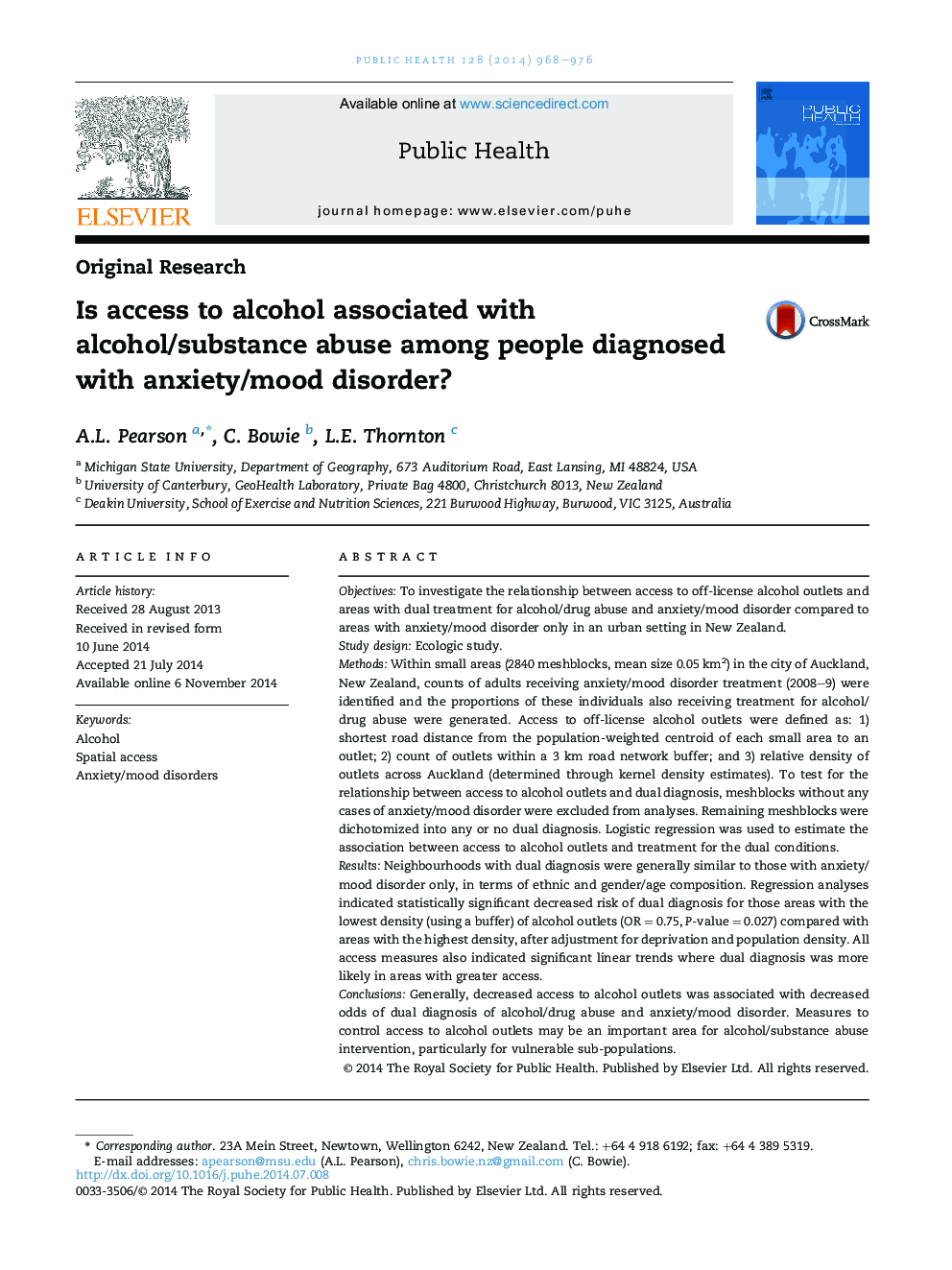| Article ID | Journal | Published Year | Pages | File Type |
|---|---|---|---|---|
| 1087476 | Public Health | 2014 | 9 Pages |
ObjectivesTo investigate the relationship between access to off-license alcohol outlets and areas with dual treatment for alcohol/drug abuse and anxiety/mood disorder compared to areas with anxiety/mood disorder only in an urban setting in New Zealand.Study designEcologic study.MethodsWithin small areas (2840 meshblocks, mean size 0.05 km2) in the city of Auckland, New Zealand, counts of adults receiving anxiety/mood disorder treatment (2008–9) were identified and the proportions of these individuals also receiving treatment for alcohol/drug abuse were generated. Access to off-license alcohol outlets were defined as: 1) shortest road distance from the population-weighted centroid of each small area to an outlet; 2) count of outlets within a 3 km road network buffer; and 3) relative density of outlets across Auckland (determined through kernel density estimates). To test for the relationship between access to alcohol outlets and dual diagnosis, meshblocks without any cases of anxiety/mood disorder were excluded from analyses. Remaining meshblocks were dichotomized into any or no dual diagnosis. Logistic regression was used to estimate the association between access to alcohol outlets and treatment for the dual conditions.ResultsNeighbourhoods with dual diagnosis were generally similar to those with anxiety/mood disorder only, in terms of ethnic and gender/age composition. Regression analyses indicated statistically significant decreased risk of dual diagnosis for those areas with the lowest density (using a buffer) of alcohol outlets (OR = 0.75, P-value = 0.027) compared with areas with the highest density, after adjustment for deprivation and population density. All access measures also indicated significant linear trends where dual diagnosis was more likely in areas with greater access.ConclusionsGenerally, decreased access to alcohol outlets was associated with decreased odds of dual diagnosis of alcohol/drug abuse and anxiety/mood disorder. Measures to control access to alcohol outlets may be an important area for alcohol/substance abuse intervention, particularly for vulnerable sub-populations.
